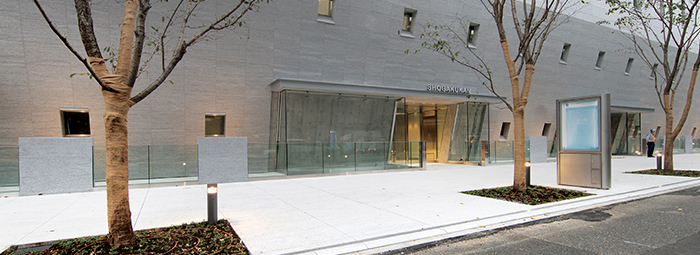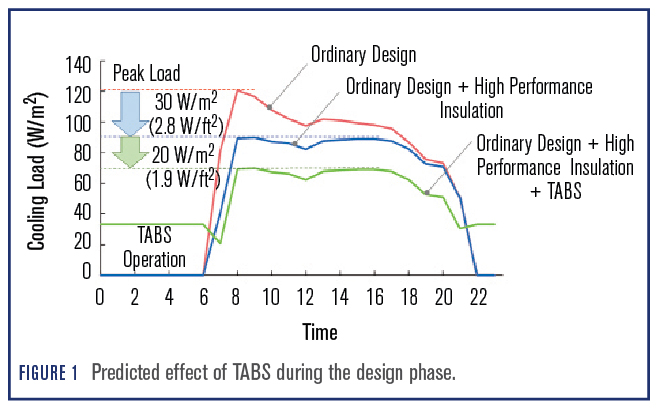
©2020 This excerpt taken from the article of the same name which appeared in ASHRAE Journal, vol. 62, no. 3, March 2020.
About the Authors
Kosuke Sato, Ph.D., P.E.jp, is engineering director of the Building Services Design Division, Eri Kataoka is a mechanical engineer of the Building Services Design Division, and Susumu Horikawa, P.E.jp, is the executive officer and principal of the Digital Technology Promoting Group at NIKKEN SEKKEI LTD.
The Shogakukan Building is the headquarters of one of the leading publishers in Japan. Before starting the design process for any new building, it is important to understand how the occupants use their existing building. In the publishing business, it is common for buildings to be operated, and at least partially occupied, nearly 24 hours per day, 7 days per week.
Because of this operating schedule and a varying heat load distribution, a unique approach to comfort and energy efficiency was necessary. As such, a thermo active building system (TABS) was adopted.
TABS designs use unique, corrugated floor slabs that integrate the building’s architecture, structure and equipment and help create a comfortable and energy-efficient building by using the heat capacity of the reinforced concrete structure. In addition to the TABS, a desiccant air-conditioning system is used to control humidity, especially during the hot and humid summers in Japan, where radiant cooling systems are not popular. This fully integrated design approach reduces both construction cost and the floor to floor height, allowing one additional story to be included by omitting suspended ceilings.
Energy Efficiency
The office floors have exterior load-bearing walls to ensure large rooms without columns. All the outer walls incorporate 450 mm (17.7 in.) thick external insulation, which protects the reinforced concrete frame. Because of the thick outer walls and recessed windows, the amount of solar radiation entering through the window openings is reduced by 26.3%. This is especially important in an office building, where internal heat loads can be quite large.
During the design phase, the peak load saving effect of TABS was calculated. Figure 1 shows a comparison of the cooling load between the Shogakukan Building and an ordinary building in Japan. First, the peak cooling load is reduced by 30 W/m2 (2.8 W/ft2) with high-performance insulation. Second, when TABS is operated at night, the cooling load is reduced by another 20 W/m2 (1.9 W/ft2) during the daytime.
During the construction phase, performance testing of the heat capacity of TABS was conducted. The temperature of the concrete surface increases by 1°C (1.8°F) three hours after the chilled-water supply is shut off, and increases by 1.5°C (2.7°F) after two more hours. This result shows that heat is stored even when the chilled-water supply is off.
The cooling and heating in this building are provided through three systems: a desiccant dedicated outdoor air system (DOAS), which processes outdoor air; TABS (a type of radiant cooling and heating system); and an air-handling unit (AHU) that handles internal loads. The heat source system consists of three types of air-cooled heat pump chillers. In summer, the hot water from the heat recovery chiller is used to regenerate a desiccant. The air-cooled chillers supply chilled water at two different temperatures: 7°C (44.6°F) for the air conditioner and 12°C (53.6°F) for TABS. The chilled water for TABS is supplied at 16°C (60.8°F) after undergoing heat exchange.
An air-conditioning system in a typical office building in Japan is an AHU that uses 100% air as the heat transfer medium. If 50% of the heat transfer medium is changed from air to water, as in this building, the transport power is reduced by about 45%.
Read the Full Article
ASHRAE Members have free access to the full-text PDF of this article as well as the complete ASHRAE Journal archives back to 1997 in the Free Member Access Area.
Non-members can purchase features from the ASHRAE Bookstore. Or, Join ASHRAE!
Return to Featured Article Excerpts
Return to ASHRAE Journal Featured Article Excerpts
